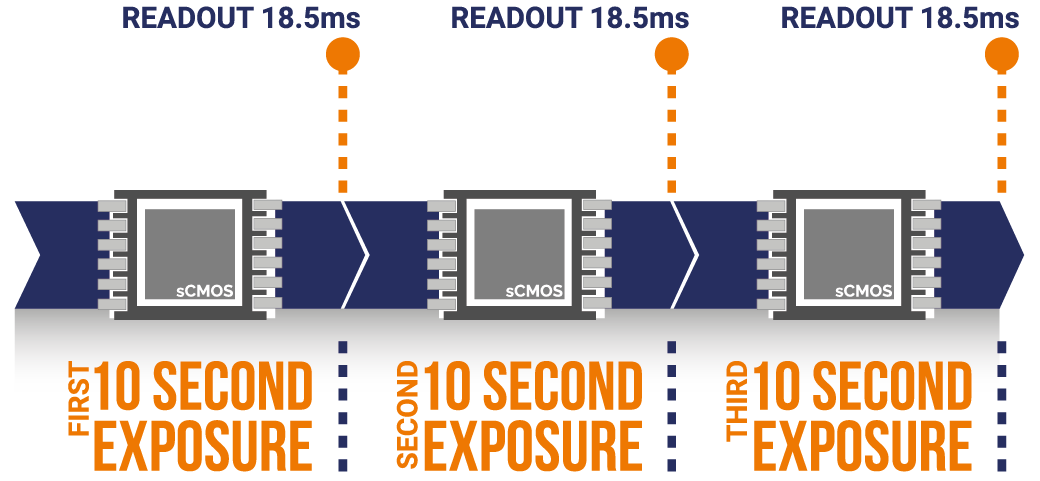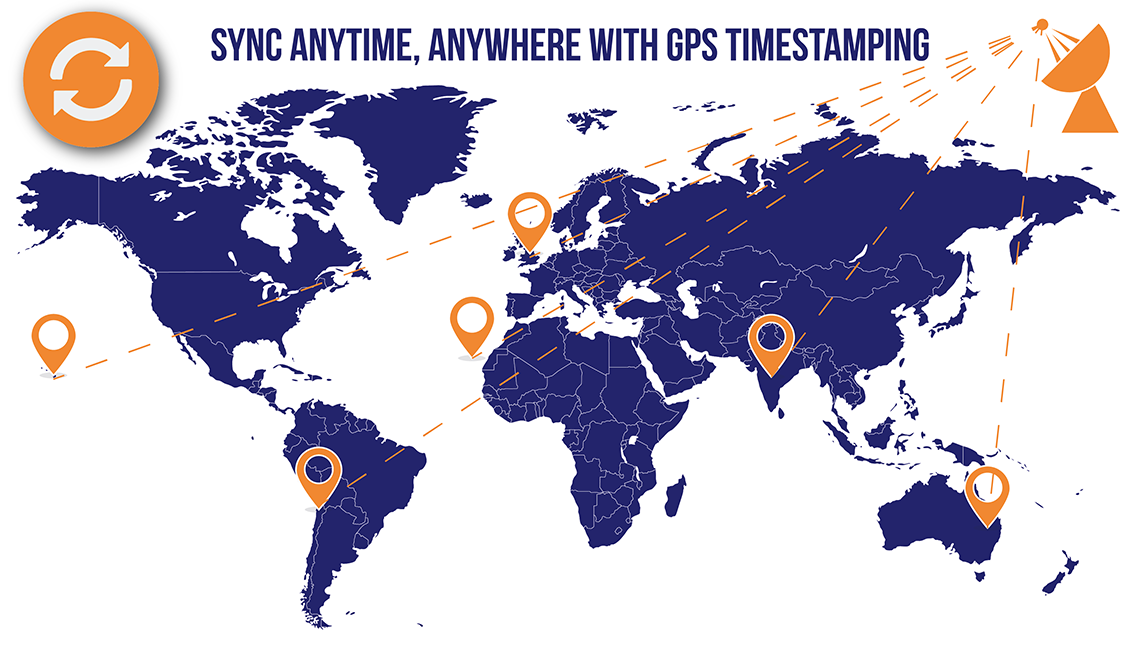2025年11月27日,牛津仪器中国迎来了新的重要的里程碑, “牛津仪器中国卓越服务中心 (Oxford Instruments China…
生命科学
物理科学
Balor is Andor’s game-changing, very large area sCMOS camera platform for Astronomy, the perfect solution for Large Sky Surveys that measure photometric and astrometric variability across timescales ranging from milliseconds to tens of seconds.
16.9 Megapixel / 70mm sensor – large sky surveys
54 fps full frame – fast solar dynamics/fast moving objects
Low read noise – detect weak signal/small objects
Extended Dynamic Range – across range of object brightness/sizes
Minimal down time - vacuum longevity and quality: no moisture.
Balor is Andor’s game-changing, very large area sCMOS camera platform for Astronomy. It launches with the Balor 17-12 model, featuring an enhanced FoV 16.9 Megapixel, 70mm diagonal sensor, coupled with fast, low noise readout capability. Balor is ideal for measuring photometric and astrometric variability from milliseconds to tens of seconds timescales.
Balor is the largest commercially available sCMOS camera, designed for ‘dynamic astronomy’ applications such as Orbital Debris tracking, Solar Astronomy, Solar System Object detection, Exoplanet Discovery, Atmospheric Studies and Fast Time Resolution Astrophysics. Balor lends itself particularly well to the ‘atmospheric freezing’ techniques of Speckle/Lucky Imaging, enabling resolution enhancement of ground-based astronomy over a much larger field of view than is readily achievable through use of adaptive optics.

Balor combines 2.9 e- read noise with an exceptionally fast 18.5 millisecond readout, allowing up to 54fps full frame readout, perfect for studying solar or atmospheric dynamics. The faster readout capability, 2500x faster than CCDs, also renders Balor superb for exoplanet discovery, radically compressing measurement cycle times and allowing more time to instead be spent capturing scarce photons.

Balor outperforms in the area of quantitative photometric measurement. Complimented by a market-leading linearity of > 99.7%, the large 12 µm pixels offer an 80,000 electron well depth and an on-chip multi-amplifier design means the whole photometric range, from the noise floor up to the saturation limit, can be captured with one image. Such capability is ideal for photometric accuracy of light curve measurement across high dynamic range object fields.
Balor delivers both Rolling Shutter and Global (Snapshot) Shutter exposure modes. The latter can be useful for applications where every pixel across the array must carry the same relative exposure timing correlation, relative to an external timestamp.
49.5 x 49.2 mm sensor - Very large field of view from 16.9 Megapixel, 12 mm pixel pitch sensor.
18.5 millisecond readout - Readout a 4k x 4k sensor 2500x faster than a CCD. Spend time capturing scarce photons instead!
Up to 54 fps - Unique solution for a range of high time-resolution observing challenges, without compromising noise or FOV.
Extended Dynamic Range and > 99.7% Linearity - Superb quantitative accuracy across a wide range of magnitudes within a single image.
Readout noise ~ 2.9 e- - Exceptionally low noise, even at max frame rate, suited to short exposure, low light observational challenges.
80 000 e- well depth - High well depth for quantification of bright signals.
Ultravac™ - Critical for sustained vacuum integrity and to maintain unequalled cooling and QE performance, year after year.
CoaXPress as standard - 4 Lane CXP-6 interface enabling the highest frame rates over distances up to 30 m.
Rolling and Global shutter supported - Maximum exposure and readout flexibility across all applications. Global Shutter for snapshot capture of fast moving/changing events.
No mechanical shutter - Balor requires no mechanical shutter, thus avoids the downtime associated with shutter replacements
IRIG-B GPS timestamp - Image GPS timestamp with 10 ns resolution for syncing across multiple instruments and multiple observation sites.
Fully Enclosed Casing (optional) - Reduced thermal bloom from Liquid Cooled Only variant; minimal effect on nearby optics and enclosed environmental temperature.
| Key Specifications | |
| Active Pixels | 4128 x 4104 |
| Sensor Size | 49.5 mm x 49.2 mm (70 mm diagonal) |
| Pixel Size | 12 x 12 µm |
| Read Noise | 2.9 e- (median) |
| Maximum frame rate | 54 fps (full array) |
| Maximum Quantum Efficiency | 61% |
| Dark current at -30°C | 0.03 e-/pix/sec |
| Readout modes | Rolling Shutter |
| Pixel well depth | 80,000 e- |
| Linearity | > 99.7% |
| Photon Response Non-Uniformity (PRNU) | < 0.5% (@ half well depth) |
| Data range | 16 bit |
| Interface | CoaXpress (4 Lane CXP-6) |
Fast Sensor Readout
The sCMOS sensor in Balor 17F-12 has highly parallel readout architecture, facilitating high data readout rates. Taking only 18.5 milliseconds per full frame readout, Balor 17F-12 can measure variability across a wide range of timescales. It is also possible to maximize SNR by using longer exposures and still achieve frame cycle times much faster than CCDs. Photometric exposure times in the tens of seconds are commonplace for transit or radial velocity measurements. When performed with a 4k x 4k format CCD with 4 output ports, a low noise readout requires an additional 45 seconds on top of the exposure. Balor has an 18.5 ms low noise readout, approximately 2500x faster than a CCD! The exposure scheme below shows how, using a 10 sec exposure time, the measurement cycle time can be significantly shortened with Balor. Even when we lengthen the Balor exposure time to 15 sec to achieve the same SNR as a back-illuminated CCD, the duty cycle remains much shorter. Thus, Balor is an opportunity for enhanced SNR and temporal resolution combined. Balor also avoids the need for routine replacement of mechanical shutters.

Fast Frame Rates
The Balor models are capable of delivering up to 54 fps at the full 16.9 Megapixel (16-bit), the data streaming to PC through an extremely high-bandwidth CoaXPress (4 Lane CXP-6) interface. This is ideal for fast applications such as Solar Flare Dynamics and Speckle/Lucky imaging for atmospheric freezing.
| Max Frame Rate (fps) | ||
| ROI Size (WxH) | 16-bit 100% Duty Cycle | 16-bit |
| 4128 x 4104 | 54 (34) | 44 (34) |
| 2048 x 2048 | 108 (68) | 88 (68) |
| 1920 x 1080 | 205 (126) | 167 (127) |
| 1024 x 1024 | 216 (132) | 176 (134) |
| 512 x 512 | 431 (252) | 350 (258) |
| 128 x 128 | 1684 (785) | 1337 (840) |
Faster speeds still are available through Region of Interest selection, scaling only with ROI height, i.e. a full width ROI provides the same frame rate as a reduced with ROI, as long as they share the same number of rows. This can be useful for imaging elongated samples at fast frame rates

Extended Dynamic Range and Superb Linearity
The innovative Multi-Amplifier architecture of the Balor sCMOS sensors uniquely circumvents the need to choose between high or low gain amplifiers, in that signal can be sampled simultaneously by both high gain (low noise) and low gain (high capacity) amplifiers. As such, the lowest noise of the sensor can be harnessed alongside the maximum well depth, affording a wide dynamic range.
Furthermore, on-camera intelligence delivers a significant linearity advantage (> 99.7% linearity), providing unparalleled quantitative measurement accuracy across the full dynamic range.
Low Maintenance Astronomy

Professional astronomy cameras are often in remote, often unmanned, observing locations and need to operate without service intervention over long durations of time.
Balor Permanent Vacuum – UltraVac™ uses a hermetic vacuum seal, completely preventing any gas ingress from the outside environment.
No Shutter Failures – Applications that involve frequent cycling of mechanical shutters, such as exoplanet discovery, require routine shutter replacements and associated downtime. Balor offers on-sensor Rolling and Global Shutter options, thus overcomes the need for mechanical shutters. No mechanical shutters means no shutter failures! Note, lack of a mechanical shutter also avoids ‘exposure gradient’ effects associated with an iris shutter, thus better for accurate photometry with short exposures.
Rolling Shutter and Global Shutter

Not all ‘scientific CMOS’ cameras on the market offer a choice of Rolling and True Global exposure. Most offer one or the other. Balor 17F-12 offers both exposure modes.
Rolling Shutter - Rolling shutter essentially means that different lines of the array are exposed at different times as the read out ‘wave’ sweeps through the sensor. Balor reads out in blocks of 4 rows at a time. In Rolling Shutter, each 4 row block row will start and end its exposure slightly offset in time from its neighboring 4 row block. The lowest readout noise and fastest frame rates are available from this mode.
Rolling Shutter can be operated in a continuous '100% Duty Cycle' mode when capturing a kinetic series of images, whereby after each row has been read out, it immediately enters its next exposure. 100% Duty Cycle means that no time is wasted between exposures and, perhaps more importantly, no photons are wasted. At the reported maximum frame rate, the sensor is continuously reading out in 100% Duty Cycle mode.
Rolling shutter can however, on occasion, present some application limitations: (a) when imaging relatively large, fast moving objects within the field. Then, aside from the risk of motion blur that can affect any imaging condition in which rate of motion is being temporally under-sampled, there is an additional possibility of rolling shutter spatial distortion. However, distortion is less likely when relatively small objects are moving at a rate that is being temporally oversampled by the frame rate, which in fact describes the vast majority of use cases, even in high time resolution astrophysics; (b) A further potential downside of rolling shutter is that different regions of the exposed image will not be precisely correlated in time to other regions, which can be essential for some applications
Global Shutter - Global Shutter mode, which can also be thought of as a 'Snapshot' exposure mode, means that all pixels of the array are exposed simultaneously, thus enabling 'freeze frame' capture of fast moving or fast changing events. Before the exposure begins, all pixels in the array will be held in a 'keep clean state', during which charge is drained into the anti-bloom structure of each pixel. At the start of the exposure, each pixel simultaneously begins to collect charge and is allowed to do so for the duration of the exposure time. At the end of exposure, each pixel transfers charge simultaneously to its readout node.
When Global Shutter is configured to operate in a continuous '100% Duty Cycle' mode, an exposure can proceed while the previous exposure is being readout out from the readout nodes of each pixel. This 100% duty cycle results in optimal time resolution and photon collection efficiency. During this entire cycle, there is no period of ‘transient’ readout as found in rolling shutter.
Importantly, Global Shutter offers exact time correlation between different regions of the sensor area, which can sometimes be required when synchronizing the exposures of pixels relative to an external timestamp.
However, the mechanism of global shutter mode demands that a reference readout is performed 'behind the scenes', in addition to the actual readout of charge from each pixel. This additional digitized readout is required to eliminate reset noise from the global shutter image. Due to this additional reference readout, global shutter mode carries the trade-off of halving the maximum unsynchronized frame rate that would otherwise have been achieved in rolling shutter mode. The additional read also results in an increased read noise, relative to Rolling Shutter.
Flexible Pixel Binning and ROI
Balor features on-camera flexible pixel binning and Region of Interest (ROI) capability, user definable to 1 pixel granularity. Greater binning flexibility can be useful for some photon starved applications where pixel resolution can be sacrificed in favour of enhanced photon collection area per pixel. ROI is useful for giving accelerated acquisition frame rates, e.g. for performing Speckle/Lucky imaging on fast photometric or astrometric dynamics.
Many professional observatories require that cameras are capable of operating at high altitudes and/or low ambient operations temperatures.
iRig-B
IRIG-B GPS timestamp for temporal synchronization across multiple instruments or multiple sites. 10 nanosecond granularity means the timestamp temporal resolution won’t be compromised, even at high frame rate operation.

Hardware Timestamp
Andor’s Balor sCMOS offers an FPGA generated hardware timestamp, coincident to the end of exposure with 25 nanosecond granularity, facilitating accurate kinetic information relating to image capture.
GPU Express
The Andor GPU Express library has been created to simplify and optimize data transfers from camera to a CUDA-enabled NVidia Graphical Processing Unit (GPU) card to facilitate accelerated GPU processing as part of the acquisition pipeline. GPU Express integrates easily with SDK3 for Andor sCMOS cameras, providing a user-friendly but powerful solution for management of high bandwidth data flow challenges; ideal for data intensive applications such as Speckle/Lucky Imaging.
 公安机关备案号31010402003473
公安机关备案号31010402003473